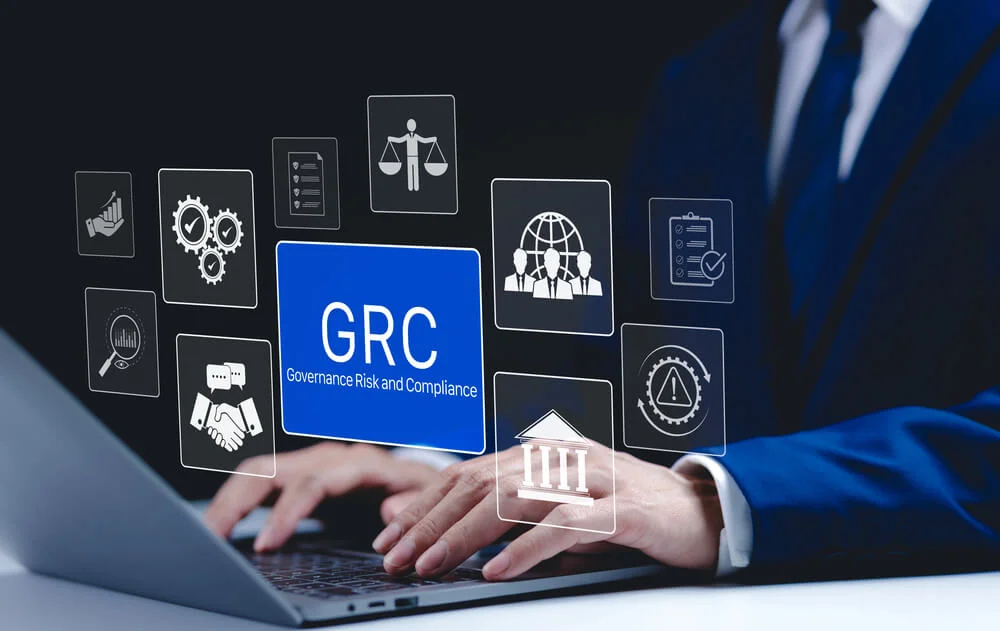Securing Your Future: Why Information Security and Compliance are Critical for Growing Organizations
As technology continues to evolve, information security and compliance have become critical issues for organizations of all sizes. Cyber threats are becoming more sophisticated and regulations are becoming more stringent, making it more important than ever for organizations to protect their data and ensure compliance. For growing organizations, however, information security and compliance can often take a backseat to other business priorities. This can be due to a lack of awareness, limited resources, complexity, or a perception of low risk. In this article, we will explore each of these factors in more detail and discuss why information security and compliance should be top priorities for all growing organizations.

The Invisible Threat: How Ignorance Impacts Information Security and Compliance
Lack of awareness is one of the primary reasons why information security and compliance may not be a top priority for growing organizations. Many organizations may not fully understand the importance of these areas, which can lead to a lack of investment and attention.
For example, some organizations may not be aware of the types of threats and risks they face. They may not realize that cybercriminals can target any organization, regardless of its size or industry. They may not be aware of the potential consequences of a data breach, such as financial losses, reputational damage, and legal liability. This lack of understanding can make it difficult for organizations to justify investments in information security and compliance.
Additionally, some organizations may not be aware of the compliance requirements that apply to them. Depending on the industry and location, organizations may be subject to a range of regulations, such as GDPR, HIPAA, or PCI DSS. Failure to comply with these regulations can result in fines, legal action, and damage to the organization’s reputation. However, organizations may not be aware of the specific requirements of these regulations or how to achieve compliance.
To address the lack of awareness, organizations can invest in employee training and education programs. This can help to raise awareness of the importance of information security and compliance, and ensure that employees understand their roles and responsibilities in these areas. Additionally, organizations can engage with external experts and consultants who can provide guidance and support on information security and compliance issues. By increasing awareness and understanding of these areas, organizations can better prioritize and invest in their security and compliance efforts.
Doing More with Less: Overcoming Resource Constraints in Information Security and Compliance
Limited resources are another key factor that can impact the priority of information security and compliance for growing organizations. In many cases, growing organizations may face budget constraints and may need to allocate resources to other areas of the business, such as sales, marketing, or product development. As a result, information security and compliance may not receive the necessary investment and attention.
For example, hiring dedicated security and compliance staff can be expensive, particularly for smaller organizations. Similarly, investing in security technologies and solutions, such as firewalls, intrusion detection systems, and vulnerability scanners, can be costly. Organizations may also need to invest in regular security assessments and compliance audits, which can require additional resources.
In some cases, organizations may attempt to address information security and compliance issues on their own, without investing in external expertise or solutions. However, this can be challenging, particularly for organizations with limited in-house expertise. Ineffective or incomplete security and compliance measures can leave organizations vulnerable to threats and at risk of non-compliance.
To address the resource constraints, organizations can consider a range of approaches. One option is to prioritize and allocate resources more effectively, ensuring that information security and compliance receive the necessary investment. Another option is to leverage cost-effective security and compliance solutions, such as cloud-based security services or managed security services. Additionally, outsourcing security and compliance functions to external experts can be a cost-effective approach, particularly for smaller organizations with limited in-house resources. By exploring these options, organizations can find ways to effectively address security and compliance challenges within their resource constraints.
Turning Complexity into Opportunity: Leveraging Information Security and Compliance for Competitive Advantage
Information security and compliance can be complex areas that require specialized knowledge and expertise, which can make it challenging for growing organizations to prioritize and address these areas effectively.
Information security encompasses a wide range of areas, including network security, data security, application security, and physical security. Each of these areas requires specific knowledge and expertise, and organizations may need to invest in a range of security technologies and solutions to adequately protect their systems and data.
Similarly, compliance can be complex, as regulations and requirements can vary depending on the industry, location, and type of data being processed or stored. Organizations may need to comply with multiple regulations, such as GDPR, HIPAA, or PCI DSS, each of which has its own set of requirements and guidelines. Achieving compliance can require a significant investment of time and resources, as well as specialized expertise.
For smaller organizations with limited in-house expertise, addressing the complexity of information security and compliance can be particularly challenging. Attempting to address these areas without the necessary expertise can result in ineffective or incomplete security and compliance measures, leaving organizations vulnerable to threats and at risk of non-compliance.
To address the complexity of information security and compliance, organizations can consider engaging with external experts and consultants who can provide specialized knowledge and expertise. These experts can help organizations to identify and address security and compliance risks, develop effective security and compliance strategies, and ensure ongoing compliance with relevant regulations. Additionally, organizations can invest in employee training and education programs to help build in-house expertise and increase awareness of these areas. By leveraging external expertise and investing in employee training, organizations can better address the complexity of information security and compliance.
Risk and Reality: How to Mitigate the Impacts of Low-Risk Perception in Information Security and Compliance
Perception of low risk is another reason why information security and compliance may not be a top priority for growing organizations. Some organizations may believe that they are not a target for cyber-attacks or that their data is not valuable enough to attract cybercriminals. As a result, they may not feel the need to invest in information security or prioritize compliance.
However, this perception of low risk is often misguided. Cybercriminals can target any organization, regardless of its size or industry, and any type of data can be valuable to a cybercriminal. For example, customer data, financial information, and intellectual property are all potential targets for cybercriminals.
Additionally, regulatory authorities and customers are increasingly demanding that organizations take proactive steps to protect their data and ensure compliance with relevant regulations. Organizations that fail to meet these expectations may face legal, financial, and reputational consequences.
To address the perception of low risk, organizations can take steps to increase their understanding of the threats and risks they face. This can include conducting a comprehensive risk assessment to identify potential vulnerabilities and threats, as well as engaging with external experts and consultants who can provide guidance and support on information security and compliance issues.
Organizations can also take steps to build a culture of security and compliance within their organization, promoting awareness and understanding of these areas among employees and stakeholders. By building awareness and understanding, organizations can better understand the risks they face and make informed decisions about how to prioritize and invest in information security and compliance efforts.
Mitigating Risks, Building Trust: Why Information Security and Compliance are Critical for Growing Organizations
Information security and compliance are critical priorities for all growing organizations. Cyber threats are constantly evolving, and regulations are becoming increasingly complex and stringent, making it essential for organizations to protect their data and ensure compliance. While there may be challenges such as a lack of awareness, limited resources, and complexity, these can be overcome with the right strategies and mindset. By recognizing the importance of information security and compliance and prioritizing them within their organizations, leaders can mitigate risks, maintain customer trust, and position their organizations for long-term success. In the end, investing in information security and compliance is not just a good business practice, but a necessity in today’s digital landscape.




